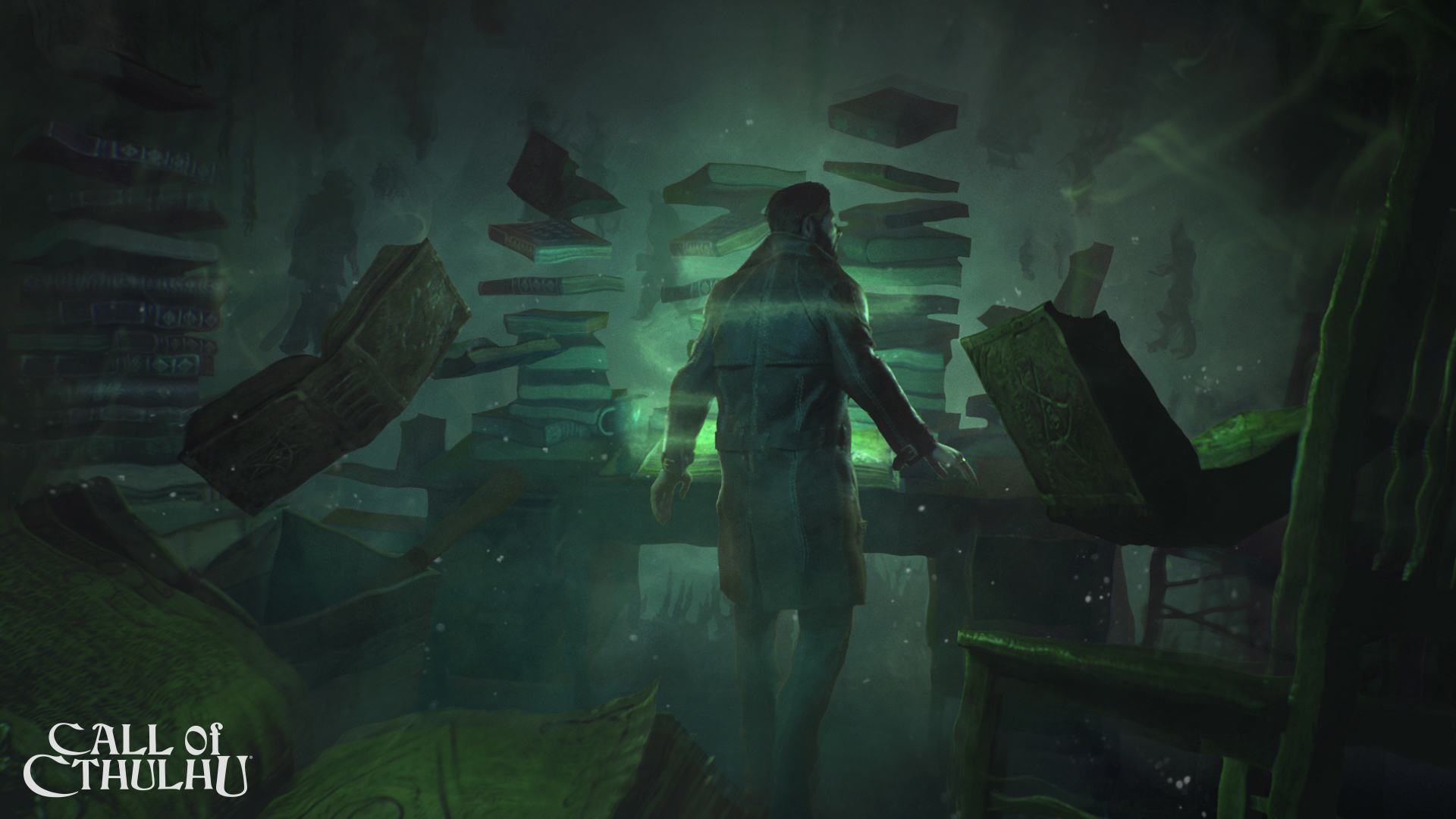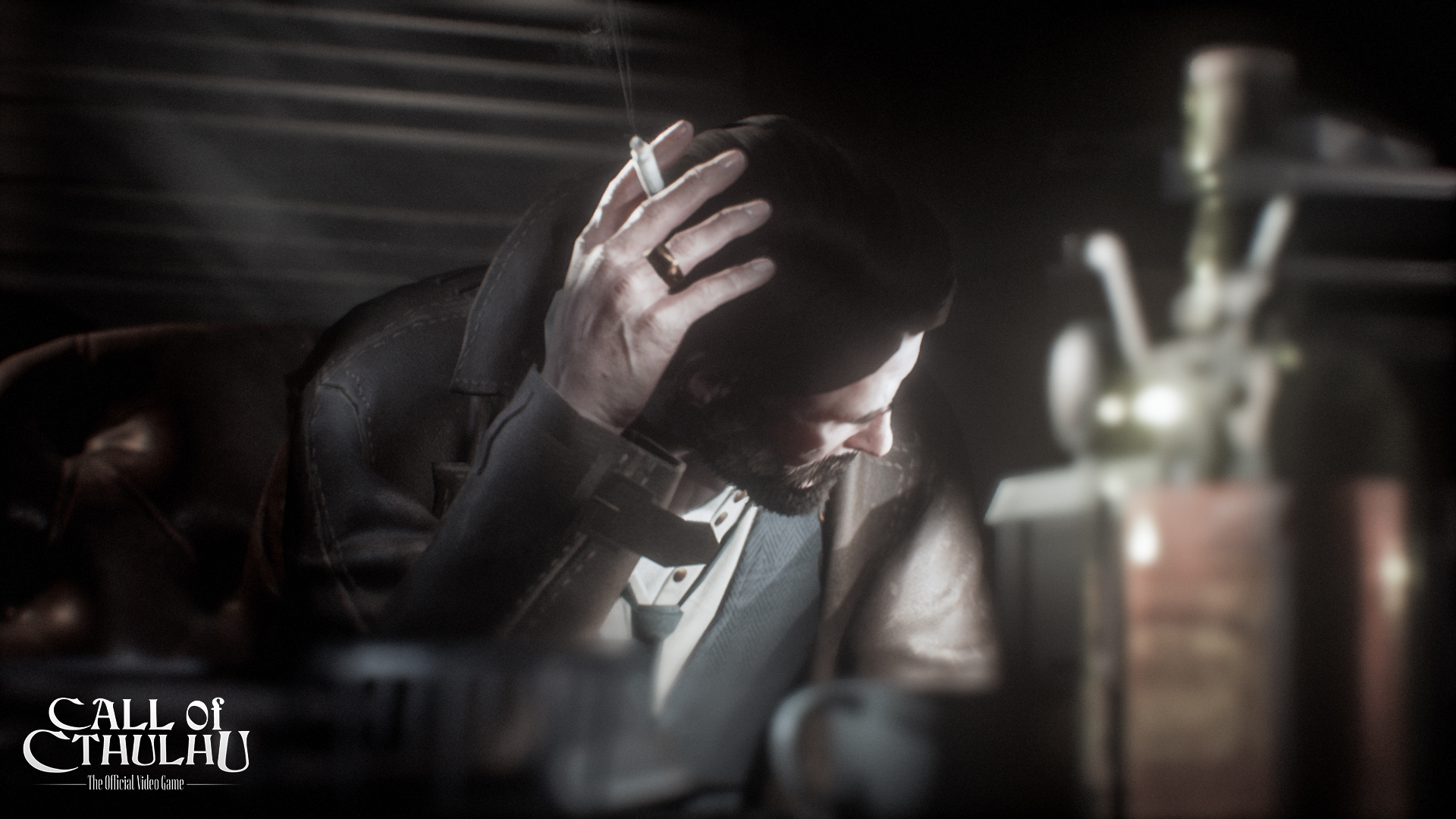
As we near the October 30 release of Call of Cthulhu, we’re taking a closer look at the game’s development through a series of Devblogs, each presented by a different member of Cyanide Studio’s team. Today, we’re joining Lead Narrative Designer Pia Jacqmart as she dives into Call of Cthulhu’s narrative and storytelling.
My name is Pia Jacqmart and I am the lead narrative designer on Call of Cthulhu. This means I’m in charge of telling the story through dialogue, cinematics, and also environments. My goal is to make you believe in the world of the game for as long as you’re playing it.
In Call of Cthulhu, you play as Edward Pierce. He’s a detective, hard-boiled, alcoholic, a loner. One day, a man comes into his office and asks him to investigate on the circumstances behind his daughter’s death. The dead woman was a well-known painter named Sarah Hawkins. Years ago, she moved to an island called Darkwater after marrying Charles Hawkins. No one has heard from her since.
Pierce takes the case, ships off to Darkwater, and begins asking questions. He soon finds himself embroiled in a conspiracy filled with cultists, lies, strange paintings and dreams of ancient beings. Playing as Pierce, you will meet the inhabitants and discover their personal stories.
We wanted to create a world you could believe in, while staying true to Lovecraft’s style. We worked a lot on the story and characters to make them strange and mysterious, but still plausible. Of course, that doesn’t mean everything has to be realistic. For example, some characters may have a particular affinity with the occult, meaning they might even be able to summon what appears to be “magic”. What makes you believe in them is their agenda: what they want, and why they want it. It’s that simple, and that difficult!

We took inspiration mostly from the Lovecraft stories The Shadow over Innsmouth and The Call of Cthulhu, but our game tells its own original tale (the title comes from Chaosium’s iconic tabletop game, this isn’t a direct adaptation of the Lovecraft story). Of course, members of the team each have their favorites. For example, our lead environment artist really likes Herbert West-Reanimator, and you cannot miss it in the game!
Call of Cthulhu doesn’t rely on jump scares to scare you. Instead, we worked a lot on the atmosphere, via the lights, sounds, dialogues, characters. It works so well that one level keeps scaring me even though I played it hundreds of times.
We believe that the interactive dialogues are a large part of the game and as such, they must create situations, and deliver information worthy of reaction. They say something about the story and its themes: the inevitability of fate, the dilemma between learning the truth at the cost of madness, or staying safe in ignorance. You will see that your choices during interactive dialogue can not only change the outcome of you adventure, but shape the personality of your very own Pierce.

One of the most difficult things with storytelling is that it never works as a placeholder. You have to trust yourself, and wait until the voice actor is reciting to know if some lines work or not. I remember one specific line – everyone on the project kept asking if I really wanted to keep it. I fought for that line and told them to wait, that they would see how brilliant it was when read out loud by an actress. When the actress, during the voicing, told us she didn’t even know how to pronounce some specific words properly, I understood I totally failed on that one! The team kept joking about it until I cut it.
Stay tuned for more Devblogs soon! Call of Cthulhu releases for PlayStation 4, Xbox One and PC on October 30. Digital and retail preorders are available on PC and consoles.
